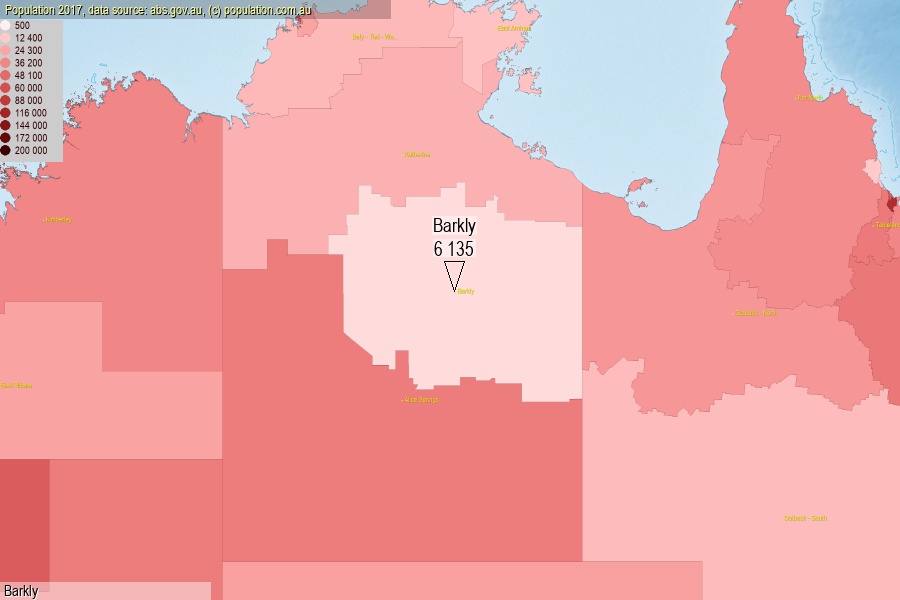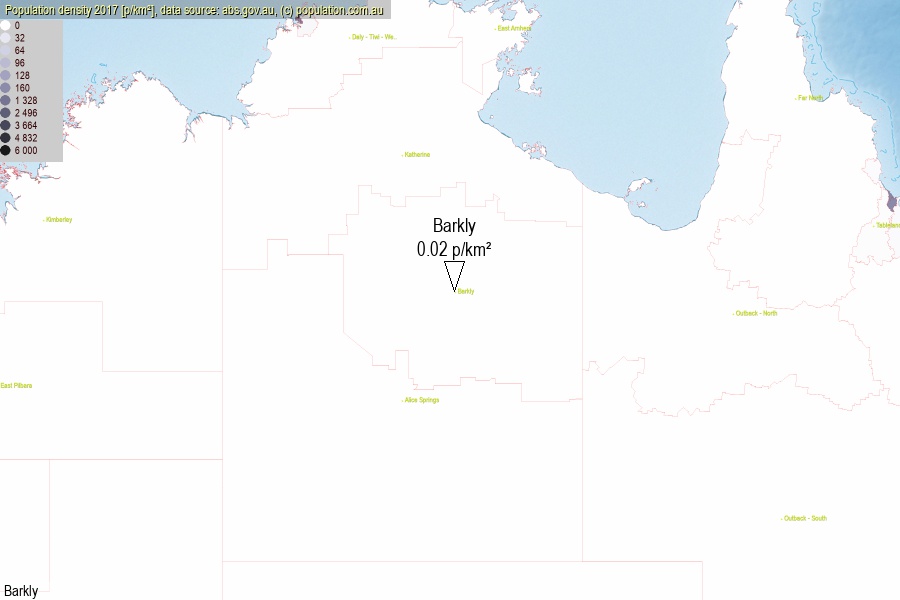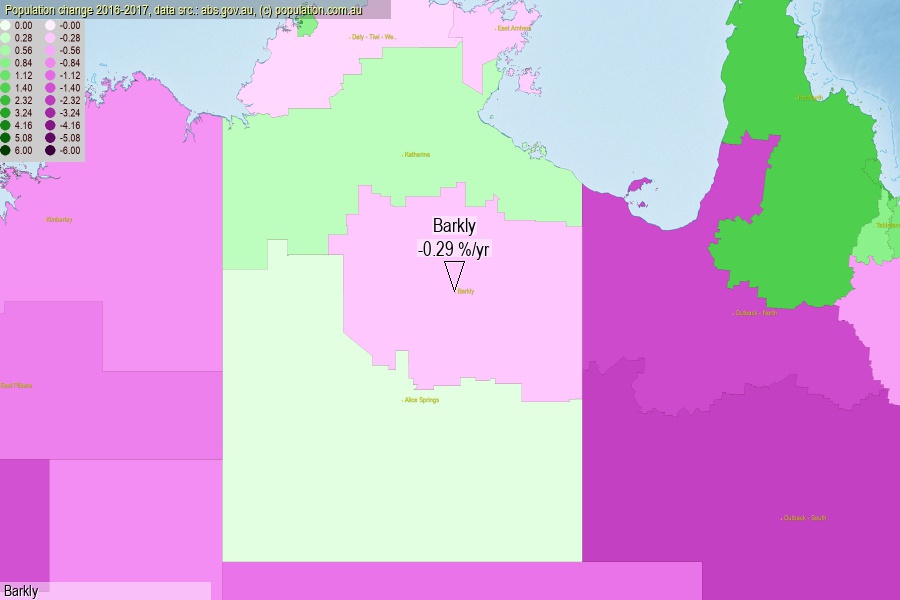 population.com.au
population.com.auLast official estimated population of Barkly (as Statistical Area Level 3) was 6 135 people (on 2017-06-30)[2]. This was 0.02% of total Australian population and 2.487% of NT population. Area of Barkly is 303 213.00 km², in this year population density was 0.02 p/km² . If population growth rate would be same as in period 2016-2017 (-0.29%/yr), Barkly population in 2025 would be 5 993. [0]



Click to enlarge. Barkly is located in the center of the images.
Population [people], population density [p./km²] and population change [%/year] [2]
View borders » (new window) [4]
[1991-1992] +4.39 %/Y
[1992-1993] +2.05 %/Y
[1993-1994] +1.25 %/Y
[1994-1995] +1.45 %/Y
[1995-1996] +1.65 %/Y
[1996-1997] +0.62 %/Y
[1997-1998] -1.79 %/Y
[1998-1999] -2.29 %/Y
[1999-2000] -2.74 %/Y
[2000-2001] -3.48 %/Y
[2001-2002] -1.42 %/Y
[2002-2003] -1.41 %/Y
[2003-2004] -0.22 %/Y
[2004-2005] +2.22 %/Y
[2005-2006] +2.04 %/Y
[2006-2007] +2.13 %/Y
[2007-2008] +2.48 %/Y
[2008-2009] +1.67 %/Y
[2009-2010] +0.82 %/Y
[2010-2011] +0.12 %/Y
[2011-2012] -0.37 %/Y
[2012-2013] -0.81 %/Y
[2013-2014] -2.07 %/Y
[2014-2015] -1.20 %/Y
[2015-2016] -1.96 %/Y
[2016-2017] -0.29 %/Y
[0] Calculated with linear interpolation from officially estimated population
[1] Read more about SA3 and Australian Statistical Geography Standard (ASGS) on abs.gov.au
[2] Population data from Australian Bureau of Statistics (Population and density: 2017; change: 2016-2017)
[3] Digital Boundaries: Australian Statistical Geography Standard (ASGS) 2016.
[4] Border coordinates are simplifyed using Ramer-Douglas-Peucker algorithm.